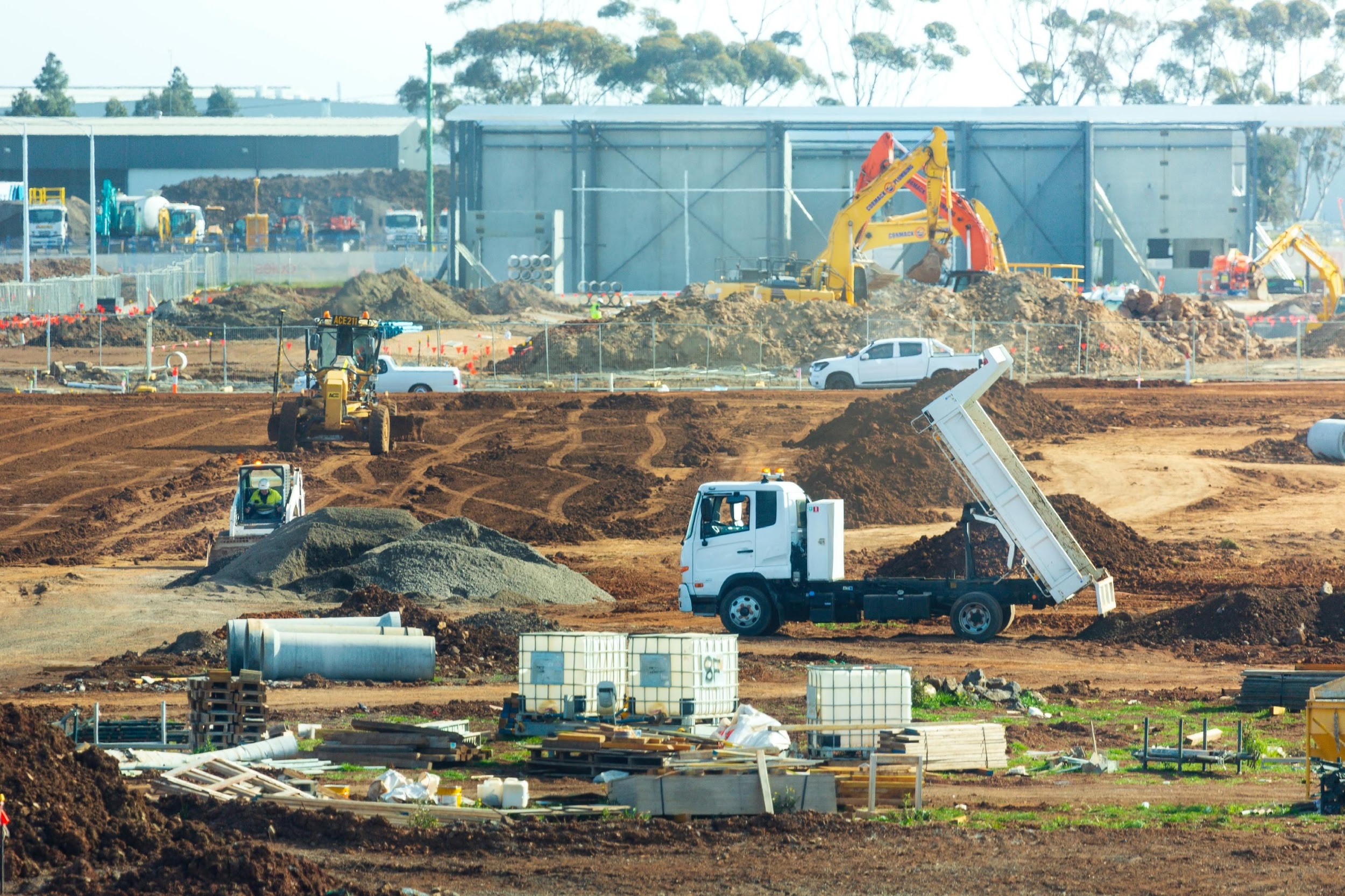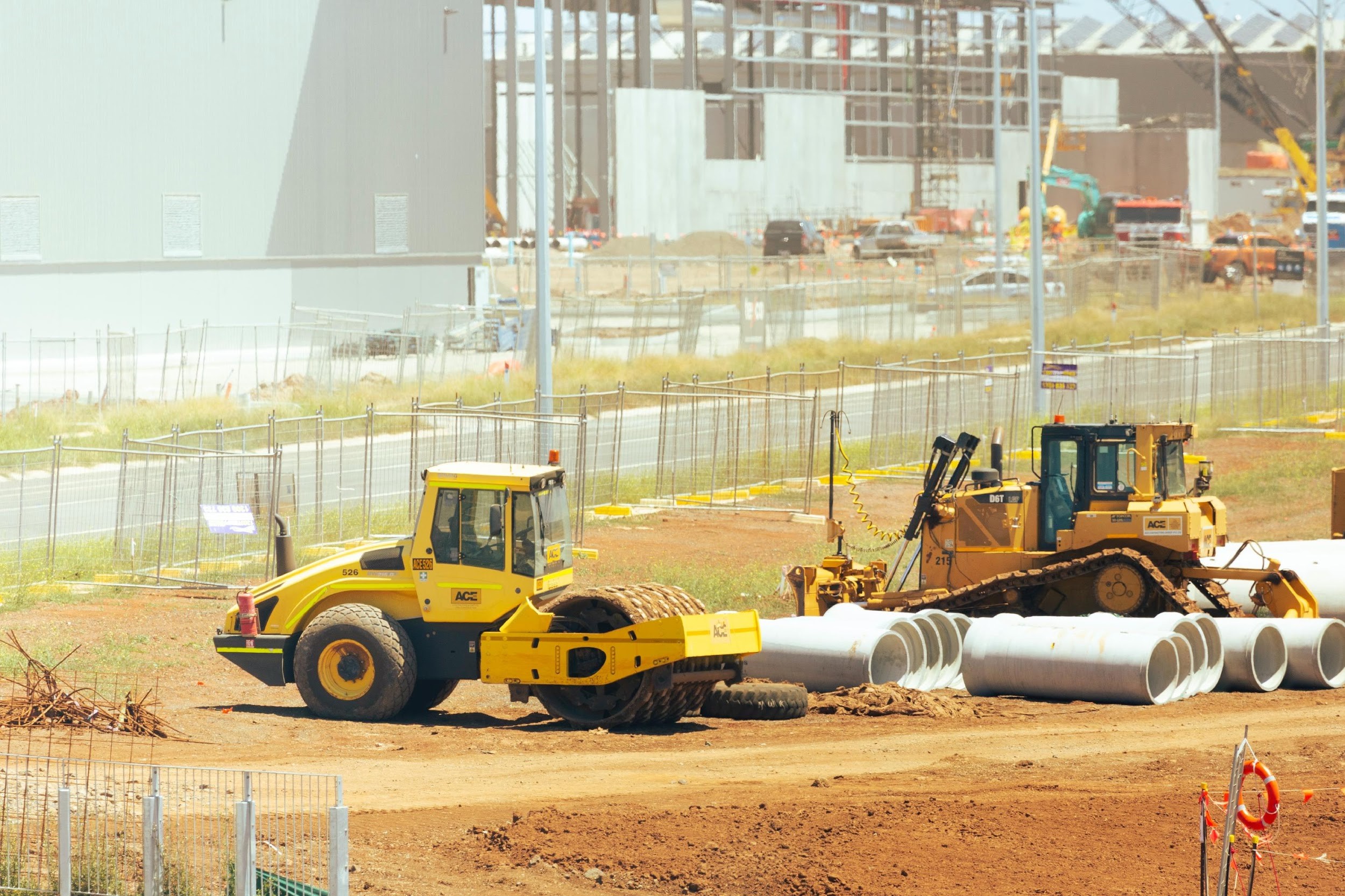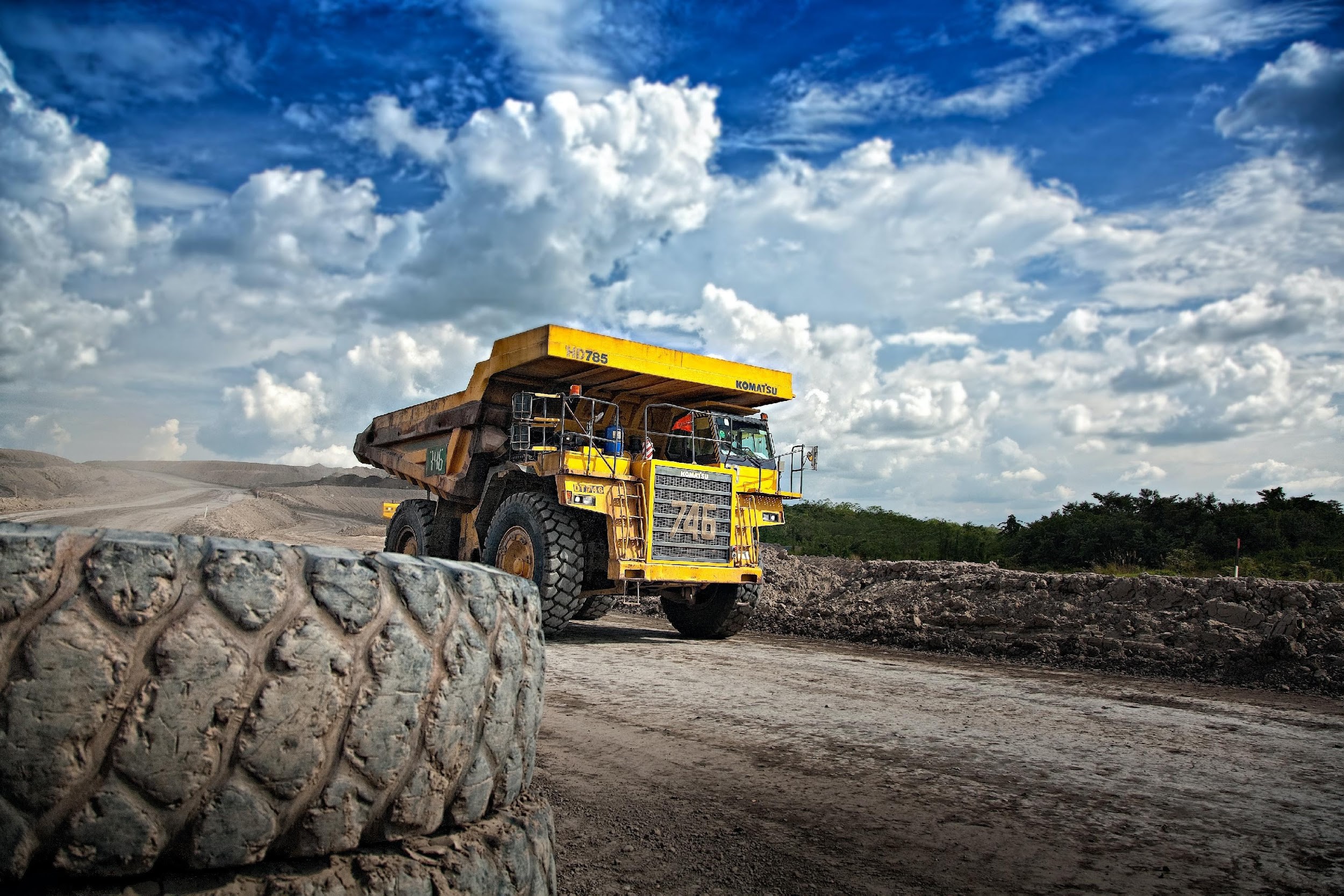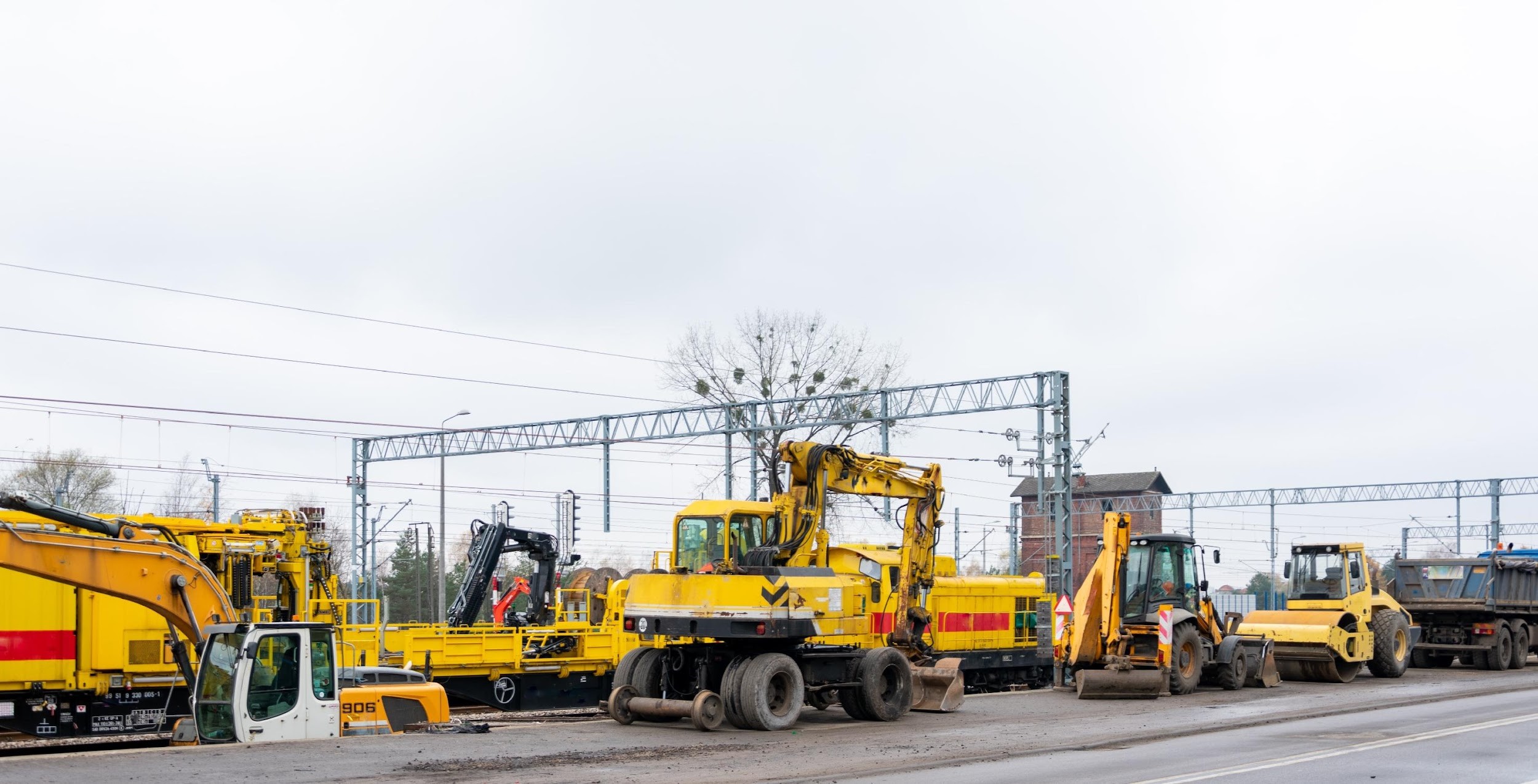Types and uses of heavy-duty equipment

There are many varieties of heavy-duty equipment, each of which serves a unique purpose. As you analyze the tasks your business is doing, you may determine it's time to expand your fleet. While some pieces of equipment have a single function, others serve many purposes; for instance, there are several alternatives for used heavy equipment for sale in the UAE that may be used to move earth or lift objects.
Heavy Duty Equipment Types
- Articulated Trucks
- Asphalt Pavers
- Backhoe Loaders
- Cold Planers
- Multi-Terrain and Compact Track Loaders
- Compactors
- Dozers
- Excavators
- Feller Bunchers
- Forwarders
- Harvesters
- Knuckle boom Loaders
- Loaders
- Motor Graders
- Off-Highway Trucks
- Skid Steer Loaders
- Skidders
- Telehandlers
- Wheel Tractor-Scrapers
Below is a list of the 19 most common kinds of heavy-duty equipment and a short explanation of their principal use. Acquaint yourself with your alternatives so you can choose the piece of equipment that will serve you and your company the best.
Articulated trucks
Articulated trucks are suitable for building site navigation. These trucks have two components: the cab, which is a tractor unit designed to traverse difficult terrain, and the trailer, which is designed to transport huge cargo. These two components are joined by a pivot, making the apparatus simpler to steer. Consider them to be advanced garbage trucks.
Asphalt pavers
If you require a piece of heavy-duty equipment to spread asphalt on roads, bridges, parking lots, or other surfaces, you're searching for an asphalt paver. This sort of equipment is often accompanied by an asphalt dump truck and a
roller. The dump truck feeds asphalt to the paver, which then spreads it throughout the surface. Although it does give a tiny degree of compaction, it must be followed by a roller in order to secure the asphalt. Heavy duty mechanic near Dubai will help you maintain your vehicle.
Backhoe Loaders
As a mix of a
tractor, loader, and backhoe, backhoe loaders are very adaptable heavy-duty equipment. The principal use of this device is the backhoe, which may be used to excavate tough materials, often dense soil. It may also be used to move large objects to a certain location.
The loader may be used to transfer dirt and materials. The fact that it is a tractor enables you to traverse tough terrain with ease. They can spin 200 degrees and are well suited for applications requiring mild to moderate force. Consider backhoe loaders as tractors with accessories that make them adaptable for any fleet.
Cold Planers
Milling machines are sometimes known as cold planers. This sort of construction machinery is used for asphalt and concrete removal. Within these machines, a large
drum spins and grinds the surface, accompanied by pavement-cutting blades. Loose pavement is automatically pushed to the center of the machine's revolving drum and fed onto an associated conveyor belt. During this milling operation, the drum is often sprayed with water to reduce dust and heat.
Compact track and multi-terrain loaders
This piece of equipment is a potent addition to your fleet if you need to transport dirt or supplies from point A to point B on-site. These devices are designed to increase output while minimizing their
footprint. Our small track and multi-terrain loaders have a rubber track undercarriage, making them perfect for traversing a range of terrains and situations. No other forms of heavy-duty equipment provide this amount of adaptability, traction, and stability.

Compactors
There are several sorts of compactors, but they all serve to decrease the size of a substance. Depending on the sort of material you need to condense, the appropriate machine will vary. A landfill compactor is the optimal tool for garbage management. On the other hand, if you are dealing with dirt, you will need a soil compaction. Pneumatic rollers are utilized with a range of materials, whereas tandem vibratory rollers are used to compress new asphalt.
Dozers
The front of a dozer is distinguished by a huge metal blade used to push enormous volumes of dirt or other debris. If you need to move huge volumes over a short distance, using a dozer to push the load is a wonderful option. If you need to transport materials over a greater distance, a backhoe loader and an articulated dump truck will be more suitable.
Track dozers and wheel dozers are the two distinct kinds of dozers. Both serve the same purpose, but their navigation methods vary. Track dozers distribute the weight of this enormous piece of equipment equally over the wider tracks that replace the
wheels, reducing the amount of pressure on the ground and reducing the likelihood of sinking into soft ground.
Wheel dozers feature huge tires instead of tracks and can travel up to three times quicker than track dozers. The kind of dozer required depends on the relative importance of the different tasks performed.
Excavators
Excavators are related to backhoe loaders, with a few important differences: they can spin a complete 360 degrees, they are typically bigger than backhoe loaders, and they are employed for medium-to- heavy duty equipment operations. There are small excavators that are suitable for mild to medium-duty tasks. Think of them as a scaled-down version that can execute comparable activities like digging, lifting, planting, and destroying, but with a smaller footprint.
You may get the same bucket attachment for digging trenches and hauling heavy duty equipment on both track and wheel excavators. On tracks, you may traverse a range of terrains and circumstances without leaving the deep marks that are possible with wheels. But with wheels, you can go far quicker.
Feller bunchers
If you are dealing with trees as opposed to dirt, you may want a feller buncher. A "feller" is an alternative term for a
lumberjack, and you might argue that this machine performs the duty of many lumberjacks. It functions similarly to a weedwhacker, but instead of scattering tree debris, it collects or bunches the trees as it works. Heavy duty mechanic near Dubai will help you maintain your vehicle.
Forwarders
After your feller buncher has gathered, chopped, and stacked the trees, you may rapidly load and remove the cut trees with the assistance of a forwarder. Combined with a loader and a back resembling an open basket, this sort of equipment may expedite the completion of a large task.
Harvesters
Whether you examined the description of a feller-buncher but were unsure if it met all of your needs, a harvester is likely a better option. A harvester combines the functions of a feller-buncher, delimbed, and slasher by stripping the tree's limbs in addition to bunching and chopping it. Consider this as advancing to the next level of logging.
Knuckle Boom loaders
After the trees have been felled, stripped, and trimmed to the correct dimensions, they must be placed onto a truck and driven to their final destination. A knuckle boom loader, a swinging machine with a boom developed particularly for picking up and loading logs, is required to load a logging truck. They move amazingly quickly for such a massive piece of construction equipment.

Loaders
There are two kinds of loaders: wheel loaders and track loaders. It would be a track loader if there were an extra-large skid steer loader. This sort of
construction equipment can lift, push, and move much like a skid steer loader, but on a bigger scale and with a greater capacity. Their tracks allow them to uniformly distribute their weight over the terrain they are moving on, reducing their likelihood of sinking into soft ground.
The only difference is that wheel loaders have wheels. They are equivalent to backhoe loaders, without the backhoe. Wheel loaders can lift, push, and move at a quicker rate than track loaders, but they may also leave their mark on a construction site since the weight of the vehicle is not distributed across tracks, but rather over four wheels.
Motor graders
The blade of a motor grader is located between the front and rear axles, while the blades of most other construction equipment are located between the front and rear axles. The most frequent use of a motor grader is to level the ground, often in preparation for the addition of more layers to build a new road.
However, it is not their sole function. They may also be used to transport a tiny quantity of dirt from one spot to another, remove a soil layer from a surface, or remove snow. Heavy duty mechanic near Dubai will help you maintain your vehicle.
Off-highway trucks
When a vehicle is constructed expressly for off-road usage on a construction site, mine, or quarry, it will allow you to move huge volumes with more flexibility. With large tires and a spacious bed for supplies, this piece of construction equipment is useful for a range of building jobs.
Skid steer loaders
When it comes to skid steer loaders, one of the most essential things to realize is that size counts. These machines are often regarded as among of the most adaptable on the market. However, a tiny skid steer, which is suitable for interior demolition work, cannot do the excavation tasks that a bigger skid steer can.
In addition to its size, one of the factors that contribute to these machines' versatility is the variety of attachments available for them, which range from lifting to pushing.
Skidders
When working on construction projects including the clearance of forested terrain, skidders are used to pull fallen trees out of the woods and onto a landing spot, where they are typically delimbed and chopped to size. Two kinds of skidders exist: cable and grapple. The traditional versions of tree skidders are those that involve dragging the trees with a cord. A grapple resembles a claw, seizing trees and dragging them in that direction.
Telehandlers
Telehandlers are one of numerous forms of heavy-duty equipment for sale that may be used to lift objects. With a telescoping boom that allows them to reach forward and upward and the many attachments available, such as
pallet forks , buckets, and lifting jibs, you have a machine that can move nearly anything. In some instances, telehandlers might be a more economical alternative to
cranes.

Tractor-scrapers with wheels
Wheel tractor-scrapers are another alternative for earthmoving. This piece of equipment is lengthy, has two axles, and a variety of sophisticated characteristics. It combines the capability of a scraper with the capacity to begin grading a surface, but instead of moving the dirt, it gathers it. The scraper has a sharp edge that penetrates the soil and loosens it.
The scraper is tilted and equipped with a conveyor belt so that when the dirt is loosened, it flows from the edge into the hopper or bowl, which resembles a truck bed. This bowl accumulates dirt until it is full, at which point it may be carried and deposited elsewhere on the property. The hydraulic movement of the hopper makes it possible to discharge the gathered dirt.



